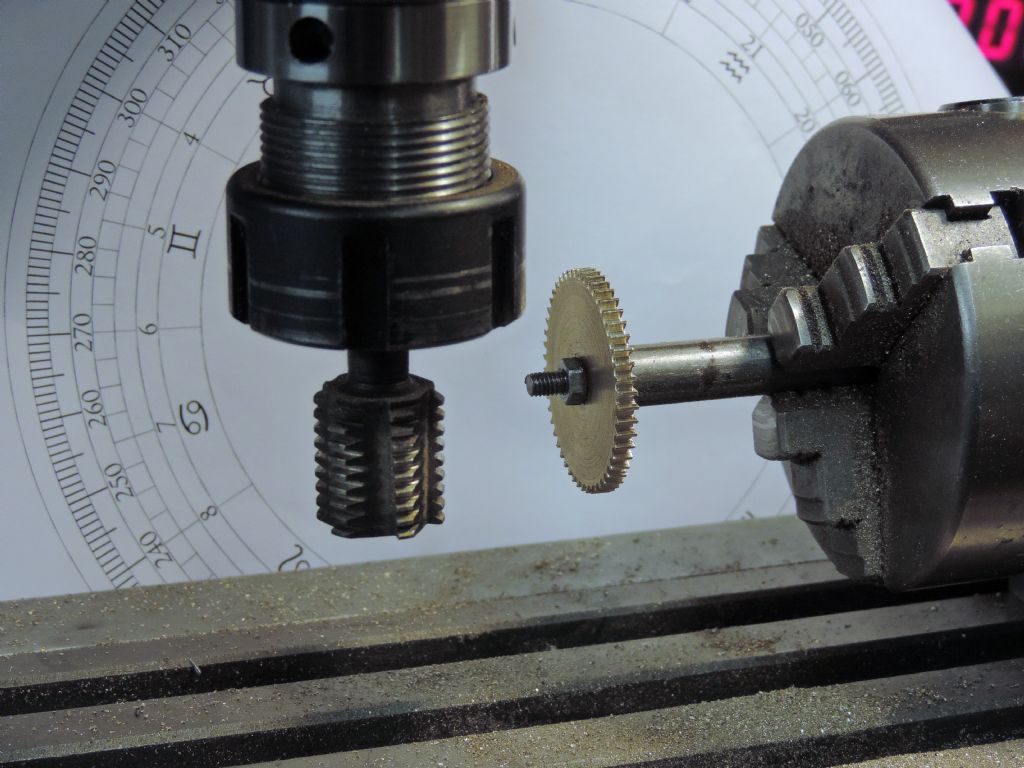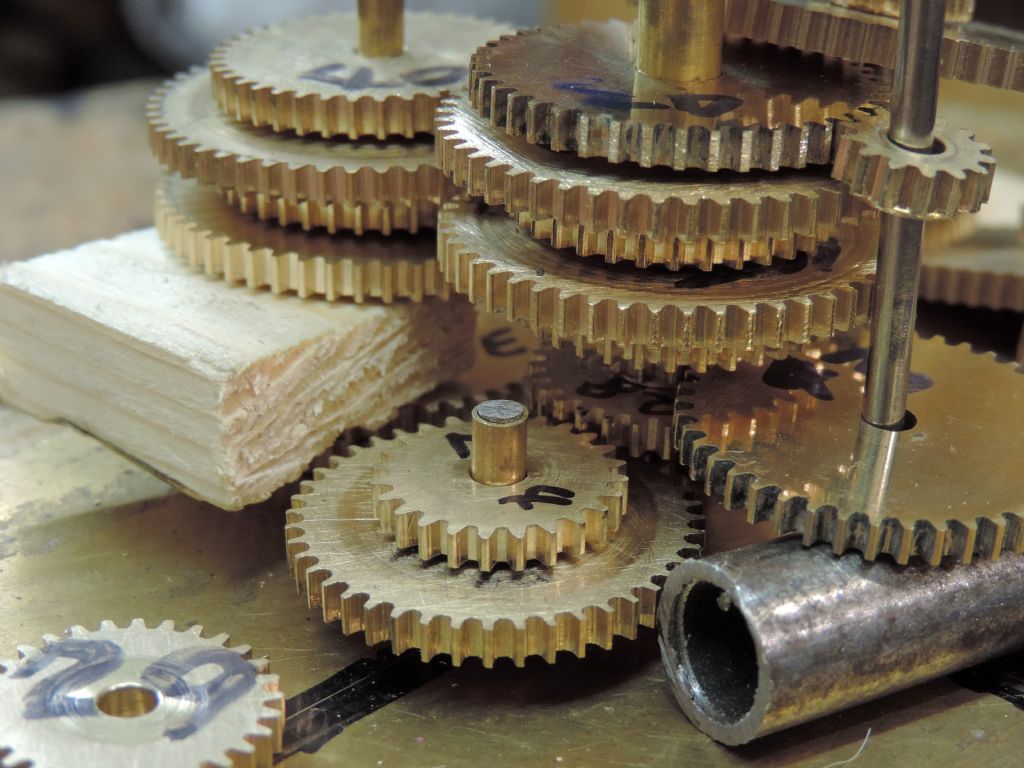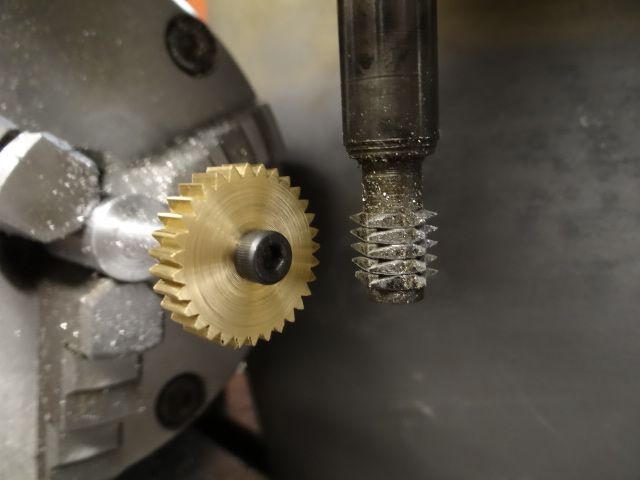Posted by John Haine on 19/10/2016 21:24:51:
I don't think anyone has commented here on the possibility of cutting gears with normal end mills/slot drills, as done the the "Gearotic" software that JS has been involved with.
Gear hobbing is a generating process where the cutter isn't a form cutter but by the process of rolling the cutter [ or work ] around the work [ or cutter ] an involute is formed.
Roughly divisible into three main types. Note I said roughly as I'm trying to keep it simple.
[1] Hobbing with a straight sided helical hob that as the blank passes by the hob the involute is formed.
Quick, easy to do on specialised machines but needs expensive cutter.
[2] Gear shaping where a cutter in the shape of a gear is rotated round a blank which making a usually vertical shaping motion and planes the involute form into the blank.
Usually more expensive to do than hobbing but has some advantages like being able to make close coupled gears that a hobber can't due to needed run out of the cutter.
[3] Gear planers where the cutter is a section of rack that planes the blank whilst rotating the blank. After producing a few teeth equal to the length of the cutter it backs off, rotates and does the next set of teeth.
These are ideal for large work and helical's and even herringbone gears with two cutting heads.
It's the action of this type I want to discuss. Because the cutter is a rack it's straight sided and the rolling action caused the involute to be generated. This type of machine was invented by Sam Sunderland way back in 1895.

Rather confusing as it shows the rack moving whilst the gear blank is stationary when in fact it's the opposite but has been done this way for clarity. So examining this operation and looking at just one rack flank you can see that if that flank was a normal cutter i.e. and end mill or slot drill then by varying the hight of the cutter, it's placement in the Y axis on a milling machine and the rotation of the blank held in a 4th axis [A] then that simple £2.00 cutter can mimic what a Sunderland can do. In the example about it took 11 passes to generate the teeth.
Sounds slow but it's all automatic.

So take away having a large purpose built machine and special cutters and substitute a bench top CNC with a £2.00 cutter and OK we are even slower working but provided that cutter can get into the tooth gullet it will cut any type of tooth shape, spur, helical, bevel and nay specials.
This is where Art Fenerty come into the equation. Art after writing Mach 3 and retiring and selling it on decided to build a clock but wasn't happy with the software out there. Whilst a lot of it looks good, mathematically it's crap.
So Art wrote his own called Gearotic, OK stupid name but so is Apple 
By taking multiple shaving cuts after blocking out the tooth space whilst raising and moving the cutter and at the same time rotating the blank it can mimic the Sunderland gear planer.

A selection of 4 gears done in bronze, 2 spur and 2 helical's. The steel helical was an early iteration when Art was still working all the maths out and hadn't got the correct helix angle worked into the formulae.
All done with an off the shelf 3mm cutter.
You can also make specials which you can also do by any of the other generating methods listed above but not by using form cutters unless specially made.

Three gears, 13, 14 and 15 teeth but all cut on the same blank. Only 14 is correct but you can mix and match these in any position.
This tooth shift is often done in industry to give stronger teeth or more contact. It helps when cutting low count gears when the pressure angle is low as it stops undercut.
In fact when I cut our version of the Myford screw cutting gears I cut the very popular 20 tooth on a 21 tooth blank to give a far stronger tooth, the ration believe it of not is unchanged.

Standard 20T on the right, modified gear on the left.
John Haine.












